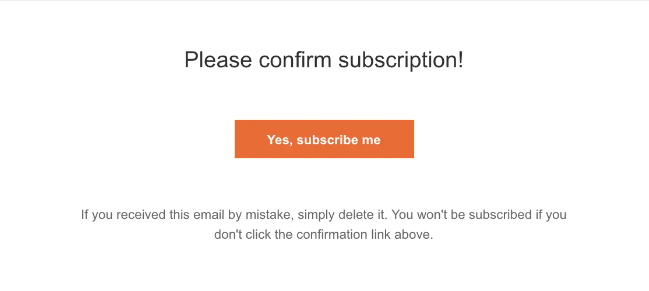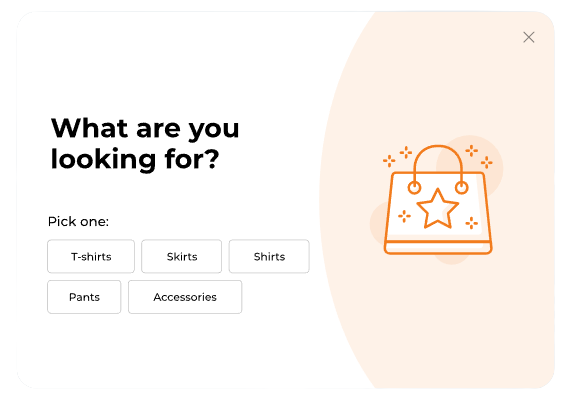Struggling to expand your online brand store’s reach? Tired of experiencing a slow-growing Klaviyo email list? Uncover effective list growth tactics that you can put to work immediately.
Why Do Email Lists Matter for Your Online Brand Store?
Email list growth is the lifeblood of a successful email marketing program. If you don’t have a continuously growing list, your marketing efforts will eventually stagnate.
Over time, your email subscribers will take on different personas through various actions, such as unsubscribing, changing email addresses, or becoming disengaged.
This means that it’s crucial to replenish your email list subscribers so that you can guarantee the long-term success of your email marketing game.
Remember: without steady email list growth, it’s fair to say that almost nothing else matters.
Email marketing consistently outperforms other marketing channels in terms of ROI, making it a top priority for your online brand store.
Since it’s the primary digital channel for retention, email marketing has become instrumental in enhancing your customer lifetime value (LTV) and retention metrics.
Plus, it has an unparalleled ability to nurture relationships and helps you to deepen the understanding of your audience.
You can think of it as a two-way communication channel, allowing customers to engage with your brand and respond to your messages, fostering a profound connection, and facilitating customer research.
The trick here is to avoid attracting low-quality subscribers by only focusing on cheap tactics like “spin the wheel” offers or promos. The cost of catering to a low-value audience includes issues such as spam complaints and high unsubscribe rates. It’ll leave you struggling to maintain engagement and ultimately block your email revenue growth.
Instead, what you can do is focus on attracting high-intent audiences who genuinely want to receive your marketing emails. By prioritizing quality over quantity, you’ll improve engagement, foster long-term relationships, and boost your online brand store’s success.
In this section, we’ll look at five distinct tactics that will help you effectively grow your email list and attract high-quality subscribers to your online brand store
In order to grow your email list, it’s crucial that you understand the difference between single and double opt-in processes. With single opt-in, users are added to your list as soon as they submit their email address, which results in capturing more email signups.
On the other hand, double opt-in requires users to confirm their email address by clicking a link sent to their inbox, which can lead to slower list growth but much higher engagement rates. This is because the double opt-in process filters out the unengaged contacts. And only someone who truly wants to receive your emails will end up in your email marketing program.

In a vacuum – and country-specific regulations aside – we recommend using a single opt-in process. However, if you opt for a single opt-in, you will need to do list cleanups on a regular basis, preferably every 60 days.
This approach will help maintain the balance between rapid growth and high engagement while ensuring the overall quality of your entire list.
A common issue with e-commerce brands is that the passive sign-up forms, such as those included in the footer, checkout, blog posts, and even the ‘About Us’ page, are actually not pushing emails into your email marketing program.
This is a missed opportunity, as these forms are integrated seamlessly into the user’s browsing experience.
To maximize subscriber growth, make sure that these forms are connected to your email service provider and direct users to the correct list. This way, new subscribers can immediately start receiving ‘welcome’ automation emails.
The key here is to make these passive sign-up forms super compelling. So, make sure you’re focussing on branding and specificity in your messaging.
Instead of generic language like “sign-up to receive our emails,” craft a message that speaks to your audience’s desired outcomes and promises value. Try to incorporate social proof too, such as mentioning the number of subscribers who are already receiving your emails.
An effective strategy is to make use of multiple pop-ups. The first pop-up should trigger within 10 seconds of a user’s arrival to welcome them, while a second pop-up form targets users who spend a certain amount of time on a product page and scrolls more than 60% down the page.
Multi-step pop-ups with a pre-engagement screen often outperform single pop-ups.
What you can do is start by asking a question to your audience that implies personalization. For example, if you’re selling pet items, ask “Is your pet a boy or a girl?” during the first screen, before asking for an email.

Provide an incentive in exchange for an email on the next screen. Incentives are typically financial, like a ‘10% OFF’ coupon code. Some variations of incentives would include:
Mobile optimization is key, as most people will view your pop-up through their mobile.
You can consider the following tips:
In addition to this – check out your Klaviyo account’s Styles section and use overlay color and/or drop shadow settings for the Form Background. This will visually separate your pop-up from the rest of the site.
Lastly, if you choose to use a single pop-up, incorporate a pop-up teaser element to allow people to reopen the form and access the offer when they want. This approach prevents users from closing the pop-up and missing out on the offer – potentially leading them to shop from your competitors.
Leveraging UTM-based targeting for your pop-up forms, enables you to create custom content tailored to the relevant traffic source and/or campaign. This approach allows you to craft precise email content that aligns with users’ expectations, creating a seamless shopping experience for your potential customers that results in higher purchase rates and faster growth of your email list subscribers.
For example, if you’re running a Facebook ad campaign for a specific product line, you can use UTM parameters to identify traffic coming from that ad. Then, design a pop-up with messaging and visuals that match the ad campaign, offering a special discount code or exclusive content related to the featured products.
The same is true of your influencer campaigns. This personalized experience shows users that you understand their interests and makes them more likely to subscribe to your email newsletter for promotional emails and engage with your brand.
By consistently using UTM-based targeting to match your pop-ups with the incoming traffic source, you’ll create a more cohesive and effective user journey. This strategy maximizes your list growth and bolsters the overall impact of your email marketing efforts, making it a powerful revenue driver.
The key to successful lead magnets is delivering value at the right time and in the most relevant context. By positioning your lead magnets strategically, you can greatly enhance their effectiveness in converting visitors to subscribers.
For example, if a customer is browsing a product page, they may be more interested in shopping incentive pop-ups, such as a discount or free shipping offer. Conversely, someone exploring your blog content might be more inclined to subscribe if they’re presented with a lead magnet offering valuable information or resources related to the topic they’re reading.
Want to optimize your lead magnet conversions? Follow this simple framework:
By following this framework and tailoring your lead magnets to the context of each visitor’s experience, you’ll deliver value in a more targeted and relevant way. This will result in higher conversion rates and a more engaged list of subscribers.
Klaviyo’s innovative platform enables you to collect zero-party data, which is invaluable for creating personalized experiences for your subscribers. By incorporating multi-step pop-ups, you can gather information about subscribers’ goals and pain points, further enhancing the feeling of personalization and increasing conversion rates.
Klaviyo saves this data as a custom property on the profile level of each subscriber.
Collecting this data is key. Not only does it help you tailor the user experience on your site but it also allows you to personalize the types of emails your subscribers receive.
For instance, you can customize product reviews to address specific pain points or highlight desired relevant offers to each contact. Likewise, you can tailor email copy and product recommendations to match individual preferences and needs.
To make the most of this rapid-fire personalization approach:
By turning your sign-up forms into data collection mechanisms, you can leverage Klaviyo’s capabilities to create highly personalized experiences for your subscribers. This will drive higher engagement and conversion rates across your email marketing campaigns.
Implementing these strategies and tips will help you effectively grow your list of email addresses and create personalized experiences for your subscribers, driving long-term success for your online brand store.
Remember, your email list is the backbone of your email marketing efforts, and investing in its growth will lead to higher engagement and conversion rates.
If you found this post interesting or worth reading, please spread the word and share it with others who may also benefit from these insights. Together, we can build a strong and thriving email marketing strategy.
Consider hiring an experienced email marketing agency like us to guide you through the process and maximize your email revenue.
Do you need
to maximize your
profits?